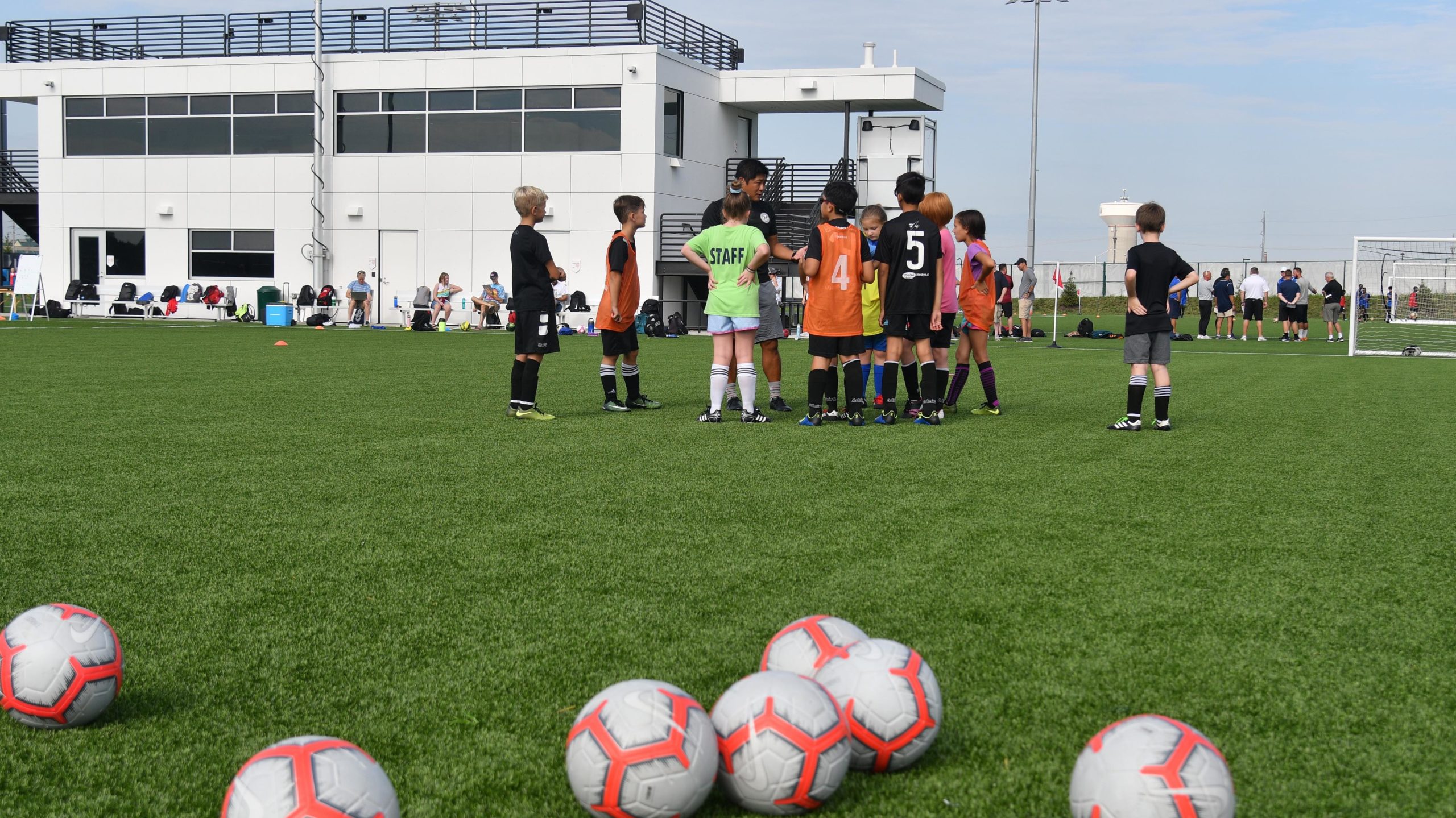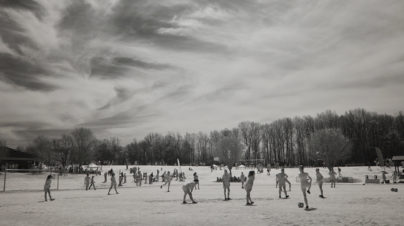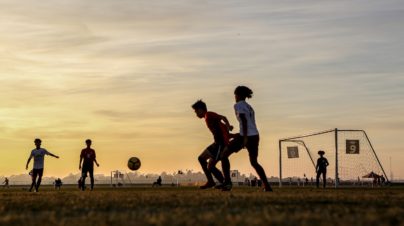Five Common Mistakes Volunteer Soccer Coaches Make and How to Fix Them

By Chris Hummer
Publisher, SoccerWire.com
There are not many other things busy adults can do with their time that have as much positive impact on communities than to volunteer for youth sports. And among the volunteer troops that get kids off their smart phone and on the fields, volunteer coaches are among the most important.
Whether you’re already volunteer coaching or decide to become one, you don’t need to feel intimidated, out of place, or unprepared. The #1 goal of getting kids out of the house is already accomplished by your willingness to get involved. Thank You!
The next step is to try and teach some soccer – and life – skills, while keeping things as fun as possible. But you don’t really need to know much about soccer to teach young players the game. You simply need to be a facilitator and positive influence.
You Don’t Have to Know the Game of Soccer to Coach
One of the best things about soccer is its simplicity. In order to make the ball do what you want, the game demands proper technique. If you play enough, the technique comes almost automatically. Far more of the world’s greatest players so far in the history of the game have come from the dirt patches of soccer-loving countries without any adult involvement than we’ve “produced” here in the USA.
In other words, you don’t have to know how to play soccer in order to introduce and teach the game to young players at the recreational level where volunteer coaching is the norm. Just facilitate the act of players being on the field with a ball in the first place, and you’ve already done more for the game and those players than most.
But You Can Do More Harm Than Good
While it’s not necessary to know the game in order to be a good recreational coach, you can become a poor coach by emphasizing the wrongs things. Doing things that risk injury, that don’t keep players engaged, and that aren’t fun, can turn players off the game and cause them not to sign up again next year.
The good news is, you should be able to avoid that worst case by simply avoiding a few pitfalls that can make you your own worst enemy, despite the best of intentions.
To that end, here are five pitfalls to avoid that unfortunately can be seen almost daily on the recreational fields each season:
1. STOP LETTING PLAYERS SHOOT BEFORE PRACTICE
Shooting a ball is the most powerful, explosive thing a player can do with their muscles, and it mostly uses the biggest muscles in the body, located in the legs.
Everything we know about modern sports science says that going from zero to full force without proper preparation is a quick way to injury. When we let players just line up and shoot the ball while they’re waiting for practice to start, they’re increasing their own risk of injury with every kick. Either with their next kick, or by setting the stage for an injury later in the practice as they fatigue.
Beyond the risk of personal injury for the player, having multiple kids shooting at goal at the same time dramatically increases the risk of other players (and families walking by to their own fields) catching a ball to the face. We don’t allow heading at the younger ages anymore, so why do we risk our kids getting hit in the side of the head with shots while they’re digging their own ball out of the net?
Save the shooting for later, once they’re warmed up, and in a more organized setting that actually resembles a game.
Extra Credit: Don’t call it shooting, call it finishing or scoring. Shooting as a term does describe the goal of the soccer movement it tries to relay. Balls kicked “on goal” that aren’t saved are what players should be trying to do. Anyone can shoot the ball (and miss).
Extra Tip: When you do incorporate any sort of finishing in your training sessions, make sure players are striking a moving ball (unless you’re practicing free kicks or penalty kicks), which is what they have to do in a game.
2. USE DYNAMIC WARM UPS INSTEAD OF STATIC STRETCHING
While dynamic and static may be new terms in your soccer glossary, they should become ingrained as gospel for players. In the simplest terms, you just need to drop the act of having players stand in lines or a circle and doing the old fashioned stretching of their big muscles for a fixed period of time.
There are volumes of sports science literature and studies on this you can look up if you need to, but in short, the muscles should be warm before stretching, and they should be stretched in a way that more closely resembles the actions the muscles will go through in soccer.
Instead of “taking a lap” and then holding toe-touches for 30 seconds, get a ball at every player’s feet and moving around in a tight space dribbling and practicing some moves at a slow pace. Every minute or so, “actively” stretch and then go back to the ball work, adding a little pace and a little more change of direction each time. Get the quads, hamstrings, groin, calf, neck, and upper body all “loose” with 2-5 second stretches alternating left and right while walking around. [Click Here for Examples]
Extra Tip: Especially for girls in their early teens, adding some knee ligament strengthening routines should be part of every practice. Look up ACL prevention in soccer for an endless amount of advice on that front.
3. LINES LINES, EVERYWHERE A LINE
Lines are the easiest way to lose players’ attention, and bluntly the laziest way to run a practice. It’s lazy because it basically allows a coach to only have to deal with a few players at a time, while the rest wait for their turn.
The game of soccer isn’t played in lines. It’s a free-flowing, creative, orchestra. Kids that stand in lines are not paying attention to anything other than the kid next to them.
You might see something that resembles a line at a well-run session, but they will be very short, just 2-3 players, and usually that way be designed as part of managing fitness levels of players, where they do something hard, but then need a quick rest in some sort of ratio of work-to-rest of 1:3 as a baseline target for “fit” players.
Players should have a ball at their feet as much as possible throughout a practice session. Every time they touch a ball, strong connections are being made in the brain and muscle memory. Especially at the younger ages, maximizing the number of times a player touches a ball should be the primary goal of the day. 1,000 touches is a great target. Unfortunately, many players on recreational teams stand in lines are probably struggling to reach 100 total touches per practice.
Extra Credit: Soccer term alert, don’t call it a drill. That term implies repetitive motion in a physical manner over and over again. Telling someone you’re going to drill something into them is not a pleasant thought, and should be saved for the Army. In soccer, we like to do exercises. Exercises involved dynamic movement with fitness and variety as their emphasis. You might also here the next exercise in a practice session called a “progression”, as in we’re moving on from one exercise to the next in a pre-planned training session. “Ok, next progression”.
4. RUNNING WITHOUT A BALL
Adding on to the theme of maximizing the number of touches on the ball during practice, there is absolutely, positively, seriously, NO REASON a player should have to run during a soccer practice without having a ball at their feet. Even the “punishment lap” can be done with a ball.
You can do your sprints. You can do your relays. You can do your obstacle courses. Just do them all with a ball. Make them dribble, pass, juggle, or anything else, just have a ball involved. It doesn’t have to be every step, but the ball should be part of the requirement.
Ideally, there is no need to do running-focused exercises at all. Many of those just another form of a line, and don’t require real problem solving with a ball for the players. The best way to get fit for soccer, is to play hard in training, and that means adding competition to each activity so the players are motivated to move quickly. You can make spaces bigger, remove players, add more balls, etc. There are no bad ideas if those ideas introduce the opportunities to touch a ball, need to change pace, and need to change directions.
5. NOT ENOUGH THINGS THAT LOOK LIKE A SOCCER
Soccer is a sport where two teams play each other trying to score on goals at opposite ends of a rectangular field. They aren’t allowed to use their hands. They have to run, dribble, pass, and finish shots on goal. Simple. The more your individual practice activities can incorporate components of how a real game looks, the better prepared the players will be for the next game.
Clearly by now you understand that standing in a line does not happen in a game. But playing keep-away in a big square that doesn’t have “direction” doesn’t really happen in a game either. Doing anything without a goal of some sort also removes a game element should be present as much as possible in order to force players to solve a problem of “how can I help our team score?”
This is a wider ranging rant that the other four tips, and it has a lot more nuance. I’m not saying everything should be a rectangle with one goal on each end line, and that you should just let players play for an hour at ever practice. But the more you always have players needing to think about how to cooperate with teammates to break down a problem than has both physical direction and some sort of goal involved, the better.
—
In conclusion, when in doubt, just let them play. At the youngest ages, where players may only have a few hours of total lifetime experience on a soccer team in a game situation, just letting them play at practice during the week can actually be the best thing for them to learn the basic problems they need to solve. If your practices have lines, sprinting around without a ball, no physical direction, and no goals, then why would you ever expect them to be ready for the game on Saturday when it looks completely different than everything they’ve just spent the week doing?
The game really is the best teacher.
SOCCERWIRE MARKETPLACE
- Adidas National Cup 2026
- Adidas Showcase 2025
- Adidas Preseason Clash 2025
- Capital Fall Classic 2025 - Register by October 1st
- Applications are Now Open for the 2026 Jefferson Cup
- Start the Season Strong at Loudoun Premier Cup!
- 50th Annual Rael Vodicka Memorial Tournament
- Soccer Marketing Internships at The St. James FC
- Job Opening: The St. James FC Goalkeeper Academy Coach
- Full-Time Director of Goalkeeping for The St. James FC
















